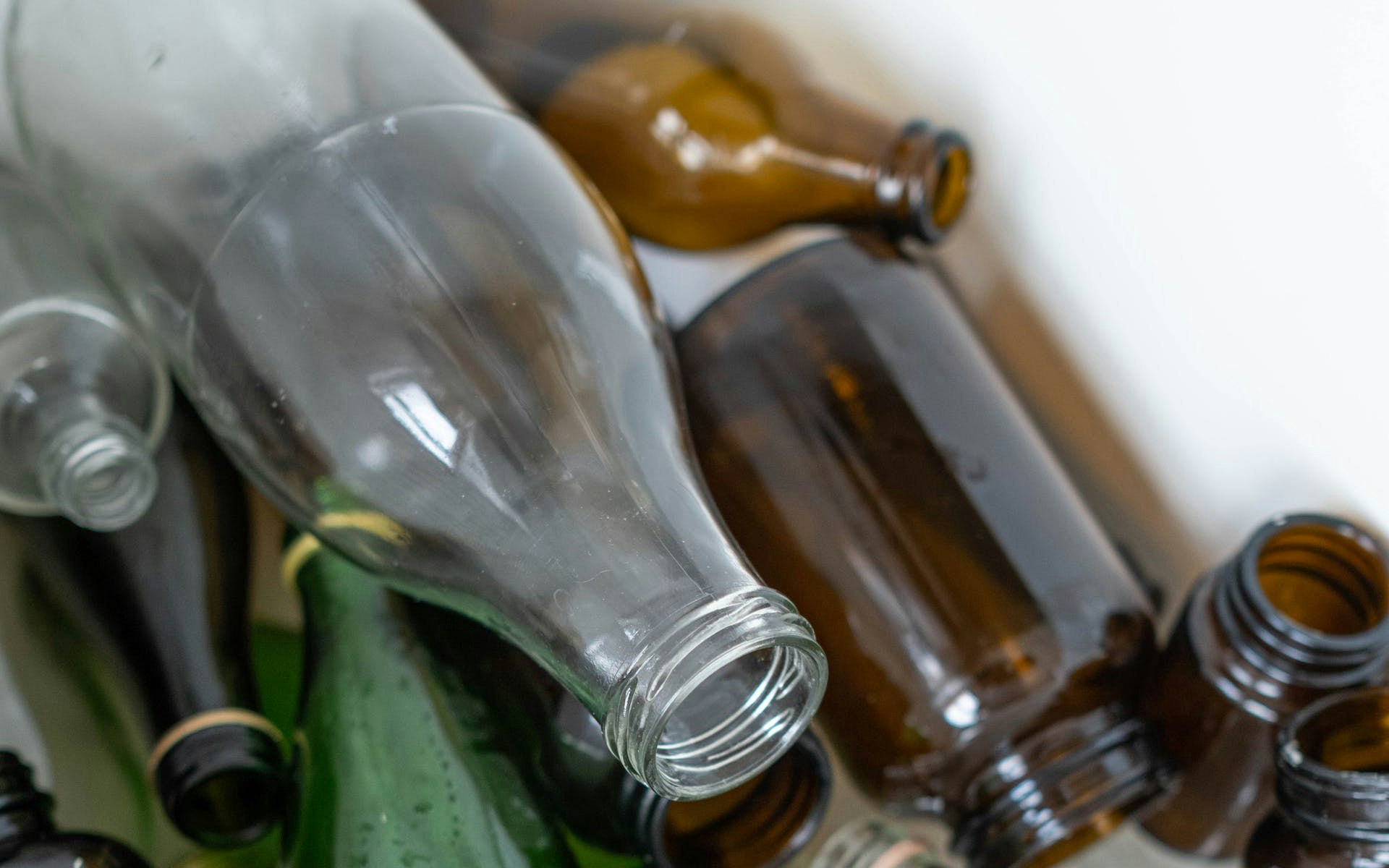Glass has been used for thousands of years as a versatile material with countless uses. Fortunately, clean, clear glass can also be recycled over and over without losing its quality, making it a great choice for products in the 21st century.
To understand how glass recycling works, this article will look at the entire recycling process for glass packaging, the benefits of proper recycling of glass, and the types of glass that are unsuitable for recycling. Plus, how you can make the process easier by doing your part at home.
The process of making new glass products from used glass materials is called glass recycling. This involves breaking and melting the glass that comes from glass bottles and jars, including alcoholic drinks, soft drinks, as well as glass jars and bottles for food, cosmetics, and other goods.
That said, there are certain types of glass such as electronics, kitchenware, mirrors, and household appliances, which must be dealt with in different ways.
Benefits of Recycling Glass
There are multiple benefits associated with the proper and efficient recycling of glass. According to the Glass Packaging Institute (GPI), using recycled glass in the production of new products cuts emissions, reduces the consumption of raw materials, extends the life of glassmaking equipment like furnaces, and saves energy.
- Recycled glass can be used to replace up to 95% of raw materials, which can help reduce carbon emissions and trash in landfills.
- Each ton of glass that is recycled saves more than a ton of natural resources.
- The cost of energy goes down by about 2 to 3 percent when you use 10% recycled glass in the making process.
- Recycled glass reduces carbon dioxide emissions by one ton for every six tons of recycled glass used.
How to Recycle Your Glass Properly
You can make the process of glass recycling easier by taking these steps before dropping it in your recycling bin:
- Rinse out your glass bottles/containers until they are fairly clean (i.e. avoid recycling glass with a lot of leftover residue)
- Remove any plastic or metal (usually lids)
- Try not to break the glass (that doesn't help)
- Dispose of any broken glass in your normal garbage can
How Glass Recycling Companies Do It (Step-by-Step)
The recycling of glass starts with consumers and commercial businesses depositing glass bottles and jars in recycling bins.
Recycling companies collect those bins and transport them to recycling plants, and the steps that follow are listed below:
1. Sorting
Before recycling centers begin the proper recycling process, they need to sort the glasses. This is an important optical process because it lets them separate certain types of glass, like mirrors, Pyrex, ceramics, aluminum cans, and metals or plastics. Also, the bottles are sorted by color because colored bottles have additives like carbon and iron that should not be mixed.
2. Breaking
A machine with about twenty-four hammers that spin on an axle is used to break the glass into tiny particles. A light spray of water is used to prevent pulverized particles from becoming airborne.
3. Trommel Screening
The broken glass then passes through a set of revolving trommel screens that rotate to separate the glass bits according to size—typically 3/8” and 3/4”.
Inside the trommel, fans are used to separate bits of labels or stickers that might still be on the glass pieces. At the same time, other objects like caps, lids, and corks that are not small enough to fall through the screens are transported, along with the bits of paper, to a different chamber for a separate recycling process.
4. Bed Drier Fluidization
This step can be seen as the purification process. The broken pieces of glass vibrate through a dryer that forces hot air at around 190 °F (87.78 °C) through the bed and the glass to burn off sugar and bacteria, as well as the remaining glue. The contaminants that remain at this stage are then extracted by vacuum.
5. Primary Screening and Pulverization
This is the first of two more screening processes to complete the recycling of glass before the remelting process. A finer-mesh screen allows smaller pieces of glass to pass through and redirects larger bits into a pulverizer. With these pieces in an enclosed unit, the pulverizer breaks them down until they are all small enough to fit through the primary screen.
6. Secondary Screening
In this final screening, the pulverized glass is sorted and classified by size for different uses.
7. The Cullet
At this stage, the glass is called “cullet,” ready to be sent to different manufacturing stations according to the secondary classification. These typically include pebbles, sand, and powder.
8. Final Stage
This is the final stage in which the pulverized glass is re-melted along with silica sand, soda ash, limestone, and appropriate additives to produce perfect new glass bottles.
Glass Types Unsuitable for Recycling
It's important to recycle only certain types of glass for juice bottles, while avoiding others.
Here are the types of glass that should not be recycled for making glass juice bottles:
- Pyrex and other Heat-Resistant Ovenware: Glass cookware and ovenware made of heat-resistant glass, like Pyrex, have different properties and melting points.
- Crystals and Glassware: Crystal glass and high-end glassware contain additives that are incompatible with the recycling process for standard glass containers.
- Ceramic and Porcelain: Ceramic and porcelain materials, such as dishware, mugs, or decorative items have different melting points and composition from soda-lime glass and can lead to impurities in the glass batch.
- Mirrors: Mirrors are coated with materials like aluminum, which can contaminate the glass recycling process.
- Window Glass: Window glass, including tempered or laminated glass may contain coatings, treatments, or different types of glass that can affect the quality of the final product.
- Light Bulbs: Glass from light bulbs, especially those with filaments or coatings can introduce impurities.
- Auto Glass: Windshields and other automotive glass may contain laminated or tempered glass, which is not suitable for the same recycling process.
To Conclude
Any juice producer should be committed to both quality and sustainability by paying close attention to the glass containers in which they present their nutritious creations. Proper glass recycling is not only an environmentally responsible practice but also plays a pivotal role in maintaining the purity and safety of our juices.


Comment